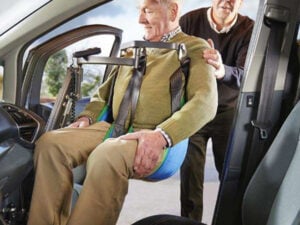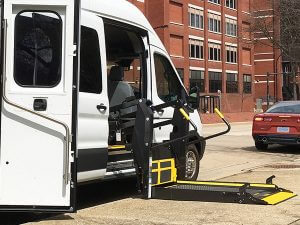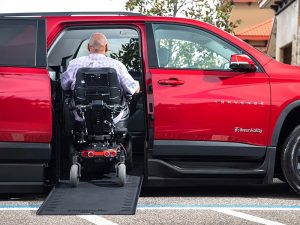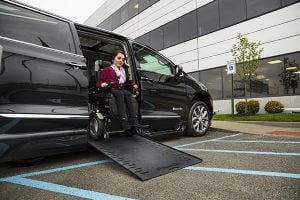
For the past two years, Cyndi, a disability rights advocate from New Jersey, has been struggling to protect her 8-year-old son from a bully. The situation has been tough to resolve because both boys are classmates and both have autism, a disorder that significantly affects socialization.
“I wish I could make sense of it and the fact the boy is on the spectrum makes this more difficult,” Cyndi said.
Sadly, Cyndi’s son is far from alone in his struggle. “There have been countless examples of bullying that I’ve learned about in this country and other countries that include all the forms of bullying, (such as) physical harm, verbal abuse, psychological/intimidation, and cyber-bullying of people with disabilities,” attests Scott Chesney, an internationally known motivational speaker who became paralyzed after suffering from a spinal stroke at the age of 15.
Stopbullying.gov also reports that “children with physical, developmental, intellectual, emotional and sensory disabilities are more likely to be bullied than their peers. Any number of factors—physical vulnerability, social skill challenges or intolerant environments—may increase their risk. Research suggests that some children with disabilities may bully others as well”—just as in Cyndi’s son’s case.
According to a fact sheet provided by stopbullying.gov called Bullying and Children and Youth with Disabilities and Special Health Needs, “Children with autism spectrum disorder (ASD) are at increased risk of being bullied and left out by peers. In a study of 8-17 year olds, researchers found that children with ASD were more than three times as likely to be bullied as their peers.”
In our case, “the problem is that this child has acted out toward (my son) verbally and physically,” Cyndi said, noting that incidents have ranged from name calling to punching.
Early on, “the teacher asked me for the opportunity to help them work through it. I am a very empathetic and understanding person and, therefore, I was okay with it,” Cyndi recalls.
But things have only gotten worse and she wants to put an end to the abuse.
While it may seem like there’s no way to stop someone from bullying your child, Chesney says there are ways to get a handle on the situation.
As part of his character development educational program called Self-Esteem Enhancement for Kids (S.E.E.K.), Chesney offers strategies that children in grades K-12 can use to help enhance their self-esteem, build character, develop acceptance and tolerance of others and oneself, foster leadership and promote overall wellness in their lives.
His workshop called Breaking Down Bullying: The Four Roles We Can CHOOSE to Play, focuses on the roles that people play when it comes to bullying. These roles include: The Bully, The Victim, The Witness and The Leader. During the workshop, Chesney also addresses why bullying takes place and what people can do to help themselves and others change roles.
As part of the advice he offers to those who attend his bullying workshop, Chesney says:
- The person who is being bullied (The Victim) must improve their self-esteem and improve communicating their feelings.
- The bully needs to work on their self-esteem and improve their communication.
- The witness has to work on their self-esteem and realize that their voice and actions play a critical role in this process.
- The leaders need to do even more to promote inclusiveness and set the example for others to follow.
- All children, teachers and parents need more education about people with disabilities and what is possible for them. (Chesney offers this advice in his workshop called Disabilities & Unlimited Possibilities…A Lesson of Acceptance, which seeks to create awareness and understanding.)
Stopbullying.gov also offers a number of helpful tips on what parents can do if they believe their child with special needs is being bullied:
- Be supportive of the child and encourage him or her to describe who was involved and how and where the bullying happened. Be sure to tell the child that it is not their fault and that nobody deserves to be bullied or harassed. Do not encourage the child to fight back. This may make the problem worse.
- Ask the child specific questions about their friendships. Be aware of signs of bullying, even if the child doesn’t call it that. Children with disabilities do not always realize they are being bullied. They may, for example, believe that they have a new friend, although this “friend” is making fun of them.
- Talk with the child’s teacher immediately to see whether he or she can help to resolve the problem.
- Put your concerns in writing and contact the principal if the bullying or harassment is severe or the teacher doesn’t fix the problem. Explain what happened in detail and ask for a prompt response. Keep a written record of all conversations and communications with the school.
- Ask the school district to convene a meeting of the Individualized Education Program (IEP) or the Section 504 teams. These groups ensure that the school district is meeting the needs of its students with disabilities. This meeting will allow parents to explain what has been happening and will let the team review the child’s IEP or 504 plans and make sure that the school is taking steps to stop the harassment. Parents, if your child needs counseling or other supportive services because of the harassment, discuss this with the team. Work with the school to help establish a system-wide bullying prevention program that includes support systems for bullied children. As the U.S. Department of Education (2000) recognizes, “creating a supportive school climate is the most important step in preventing harassment.”
- Explore whether the child may also be bullying other younger, weaker students at school. If so, their IEP may need to be modified to include help to change the aggressive behavior.
- Be persistent. Talk regularly with the child and with school staff to see whether the behavior has stopped.
Cyndi’s son, who is now in second grade, has been bullied by his classmate since kindergarten. After the most recent incident, she met with the school principal to come up with an alternative solution to having the aides on staff keep a look out, as they previously promised to do.
“They have now assigned the classroom aide from their class to watch this boy specifically during lunch and recess,” Cyndi said. Also, “I have made the child study team aware of the situation and, hopefully, if this child’s parents are in denial about his accessibility needs, they could help.”
In the end, just remember “‘the only place a true disability can reside is in one’s attitude…and that is a choice’,” Chesney says, adding, “(That) is what I always say, we all have the choice to disable ourselves—some through bullying, some through being victims and some through being witnesses. I have always said, ‘Choose to be a leader and if you can’t be a leader, make sure you follow a good one!’.”
If the tips listed above don’t help, stopbullying.gov recommends that parents, like Cyndi, reach out to the following groups for support:
The U.S. Department of Education Office for Civil Rights
- Phone: 800-421-3481
- To obtain a complaint form, visit: http://www2.ed.gov/about/offices/list/ocr/ complaintintro.html
The U.S. Department of Education Office of Special Education Programs
- Phone: 202-245-7468
The U.S. Department of Justice Civil Rights Division
- Phone: 877-292-3804

Find your perfect Wheelchair Van
Select from thousands of wheelchair vans for sale from hundreds of nationwide dealers
The Mobility Resource has one of the largest selections of Dodge, Toyota, Chrysler, Honda, Ford, Chevrolet wheelchair vans
View All Wheelchair Vans
































Tweet
Share https://www.themobilityresource.com/blog/post/what-to-do-when-children-with-disabilities-are-being-bullied/